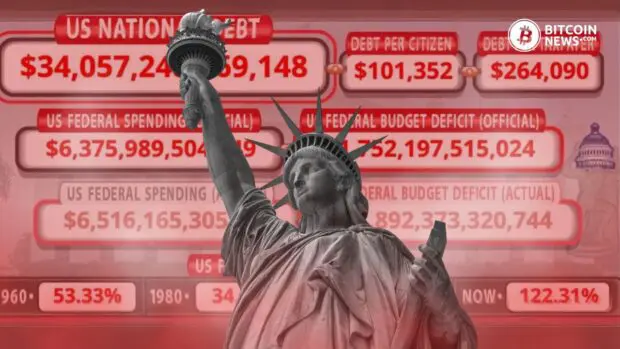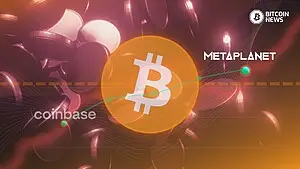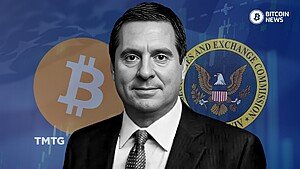Repetitive National Debt of the United States News
The national debt of the United States news is old news. It has long been a subject of intense scrutiny and discussion because it mirrors a ponzi scheme. It’s a fiscal rollercoaster where the only thing expanding faster than the money supply is the collective anxiety about inflation and our shrinking wallets.
Every dollar printed is like a comedian telling the same joke: it gets less valuable with each repetition. This relentless expansion of fiat currency is a catalyst for a plethora of economic challenges, notably inflation and the diminishing value of currency. All of this debt also causes real businesses in the economy to get over leveraged. Luckily, envisioning a shift towards a Bitcoin-centric economic framework offers a captivating alternative that could potentially resolve these systemic flaws.
The Current Debt-Based System
While financial pundits like Dave Ramsey might express skepticism about Bitcoin, he is able to accurately diagnose the predicament of the U.S national debt. There’s a palpable lack of political resolve to address this burgeoning crisis.
The only thing wrong with that video is when Dave said, “The US could mathematically pay down its $33 trillion in debt.” That’s like saying you could clean your entire house with a toothbrush. While technically possible, good luck getting someone to do it. Politicians campaigning on spending cuts is akin to finding volunteers for designated driving at a party—everyone thinks it’s a great idea until it’s their turn to sacrifice.
As the national debt inflates like a balloon in a comedy sketch, the government’s solution seems as effective as fixing a leaky faucet with a sledgehammer. Treasury bonds are being churned out like hot dogs at a baseball game, but here’s the kicker: the usual lineup of eager investors and foreign governments is thinning. This means the Federal Reserve is increasingly jumping in like a rich uncle clearing his nephew’s extravagant credit card bills. It’s becoming a norm, not an exception.
But as they say, there’s no free lunch. This money doesn’t just appear; it’s conjured up to settle old debts, triggering inflation as if it’s a grand finale of a fireworks show. Every dollar printed weakens its purchasing power, a humbling reminder of Newton’s third law applied to finance: for every action (like printing money), there’s an equal and opposite reaction (hello, thinner wallets!). The more the Fed steps in, the more we feel it in our everyday spending, making each trip to the grocery store a little more painful than the last.
The Bitcoin Alternative
Having a debt based money is an oxy-moron. We need to swap out the base layer to fix the problem. Bitcoin, as a decentralized digital currency with a hard cap of 21 million and a set of rules which can’t be changed to enrich a small minority of those running the system, offers a stark contrast to this traditional debt-based system. Bitcoin’s finite supply mimics the properties of scarce resources like gold and is a key feature that differentiates Bitcoin from fiat currencies.
Implications for Lending and Business Growth
In a Bitcoin-based economy, the rampant lending and debt accumulation seen in current financial systems would be less prevalent. Gone would be the days of wild, credit-fueled expansion and rampant debt accumulation that mark our current financial landscape.
In this Bitcoin-driven scenario, the money supply can’t be pulled out of thin air, making lending a more cautious and well-thought-out affair. Since lenders could not just conjure money out of thin air, like fractional reserve banks are legally allowed to do, they would have to rely on the actual capital they possess.
This shift towards a more conservative lending approach heralds an era of more grounded and sustainable business growth. Companies would need to build their empires on the solid bedrock of real financial stability, not the quicksand of excessive debt. It’s like switching from a diet of fast food (easy credit) to wholesome, nutritious meals (solid financial practices).
In this new world, businesses would pivot towards creating genuine value and achieving true profitability. The focus would be on earning every dollar through real performance, not just riding the wave of easy credit. This could lead to a healthier, more robust economic environment where sustainability and long-term vision triumph over the quick-fix mentality and speculative bubbles. It’s a shift from the instant gratification of short-term gains to the enduring satisfaction of long-term success.
Navigating the Shift to a Bitcoin Economy
Embracing a Bitcoin-centric economic model isn’t a walk in the park; it’s more like a hike through uncharted territory. The intrinsic nature of Bitcoin, with its fixed supply, strips away the traditional tools used by governments to steer the economy, like manipulating inflation or unemployment rates. This rigidity means that Bitcoin stands apart from the whims of economic policy, immune to the inflationary trends that often plague fiat currencies.
Yet, this very limitation of Bitcoin could be its greatest strength. Its stability and predictability have the potential to lay down a solid bedrock for economic transactions. In a Bitcoin-driven world, value isn’t just a fleeting concept tossed around by market whims. It’s as real and tangible as the goods and services it’s used to exchange. This new financial landscape fosters an environment where value is preserved, and economic decisions are rooted in the actual worth of what’s being traded, not just speculative bubbles or the ebb and flow of inflation.
Moreover, Bitcoin redefines the concept of money as a true store of value over time. This shift could radically transform how we approach savings and investment.
No longer would people need to race against depreciating currency value, investing frantically just to maintain purchasing power. It could spell the end of unnecessary monetary premiums added to goods and services that, in a rational market, wouldn’t warrant such inflation. In essence, Bitcoin offers a chance to recalibrate our financial compass, aligning it more closely with the true north of economic value rather than the fluctuating currents of fiat currency systems.
Conclusion

The national debt of the United States underlines the inherent issues in a debt-based monetary system. A Bitcoin-based system, with its fixed supply and decentralized nature, offers a compelling alternative that could lead to more sustainable economic practices.
While the transition to such a system would be complex and fraught with challenges, the potential benefits of a more stable, inflation-resistant currency cannot be ignored. Bitcoin’s ability to facilitate economic growth without the need for perpetual debt expansion presents a visionary path forward for a healthier global economy.










